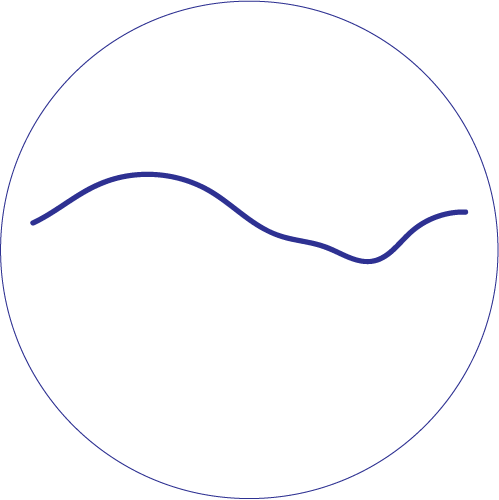Sensorium [Gina Titelman]
GINA Titelman
SENSORIUM \sen-ˈsȯr-ē-əm\
n. the hypothetical “seat” of sensation—the part of the brain concerned with the reception and interpretation of impressions (or sensory stimuli) from the external world.
The Idea A collaborative effort to create an interactive sensory museum examining the intangible forces of the human condition through the tangible world. More specifically, the museum will be designed to help the visitors (kids and adults) view themselves differently by slightly altering the lens through which they perceive the world. The museum will then use the visitors’ experiences for its own philosophical, psychological, sociological, anthropological, and ontological research studies. The visitors’ physical and emotional responses will be published on the museum website to display its evolution and ongoing results.
The Structure A series of installments grouped by intention/focus:
Experimentation with the Five Senses using Art Installations
Artists could take inspiration from a sense/sensory element they don’t normally incorporate in their chosen medium to produce something new.
Artists could record (by audio) the process of making something. For example, a contact mic on chest to record heart beat and internal goings-on, on shirt collar to record vocalizations and breathing, and on the medium itself to record the physical production process.
Artists could also interact with a specific scent, texture, or sound during their creation process, being inspired by that scent/texture/sound. This scent, texture or sound will be displayed with the finished piece along with the audio recordings from #2. This will give the viewer a fuller, richer experience and understanding of the entire process and finished piece. It allows the viewer to gain access into the artist’s headspace and to see the piece from a different perspective.
Blind Smelling: The visitors will smell a series of people (the “smellees”) without being able to see them. They will then describe how they feel and what the smells remind them of. They will be prompted to write out or audio record what comes to mind. A memory? A place? A specific person? A color? An object? An emotion?
They can write a story about the smellees—where they might have come from, what they envision their home to be like, what they did that day, where they work, what they are like. Then the smellers can switch roles and choose to be smelled. The smellees alternate every few minutes.
Sound and Vision (and Taste Perception. And Olfaction.): Artists will create different scenarios using sound and smell to alter visitors’ taste perception. These environments will combine specific visual elements, temperature, atmosphere, olfaction, food, and soundscapes to take visitors on trips to otherworldly places and discover how all the senses can relate to one another.
Visitors will take a sensory deprivation “smell tour” in which they are deprived of all other senses while walking through different scented environments. Or the opposite—visitors can use every other sense except for smell while they walk through a series of everyday scenarios. This will highlight what they would be missing without smell.
Tactile Nostalgia: Artists will simulate wet clothing for the visitors to wear in a warm or cold environment. (Reminds me of summer/first beach trips as a kid—being wet from the ocean outside and experiencing the warm breeze, and then coming back inside and experiencing contact with the cold, still air.)
Visitors will close their eyes and walk barefoot on familiar landscapes/surfaces: cold, wet moss; cold or warm sand; mud; clay; warm rock; wood planks with sawdust; a tent floor on top of cold dirt; (instructed to) jump on a bed.
Visitors will close their eyes and touch familiar skin states: cold, wet skin with goosebumps; pruny skin; dry, sun-warmed skin.
The Body Room: Visitors wear noise-cancelling headphones in a room with loud music so their only sensations are felt in their bodies.
Conversation Documentation: Visitors could record conversation and museum happenings and then compile them using design tools at the museum. Or an artist could take the visitors' recordings that capture conversations about, responses to, and experiences instigated by the exhibits, and then display them online in a creative way (like as piece of music, for example).
Experimentation with the Intangible (Through the Tangible World)
This section of the museum will focus on presenting concepts and principles of Eastern philosophy (including those of Alan Watts, Eckhart Tolle, Deepak Chopra…etc.) through interactive exhibits and exercises. These will be disguised so the visitor won’t know that they are experimenting with Eastern philosophy or a different way of thinking until after they've experienced the installation.
Frame of Reference/The Power of Words: This exhibit is to encourage the visitors to see things from a different perspective—to invite the idea that everything is an interpretation and nothing is inherently true, illustrating the power of words.
This particular (silly) example would be directed toward kids: someone would move an electric toothbrush around on a kid’s back and ask the kid what they think they are using. The kid might say, “a back massager.” Then the kid would turn around to find that it is actually what they have been taught is called a “toothbrush.”
The idea is that this discovery will help free them from the constraining nature of words so that they can see things with limitless possibility. They can take one thing that has one name and use it for something else, or build off of it to create something different, calling it something different, therefore inventing something different. Something new. This also ties in with the idea that changing their frame of reference can create a change in their subsequent behavior/actions.
To be continued...
| all content is property of the artist |
